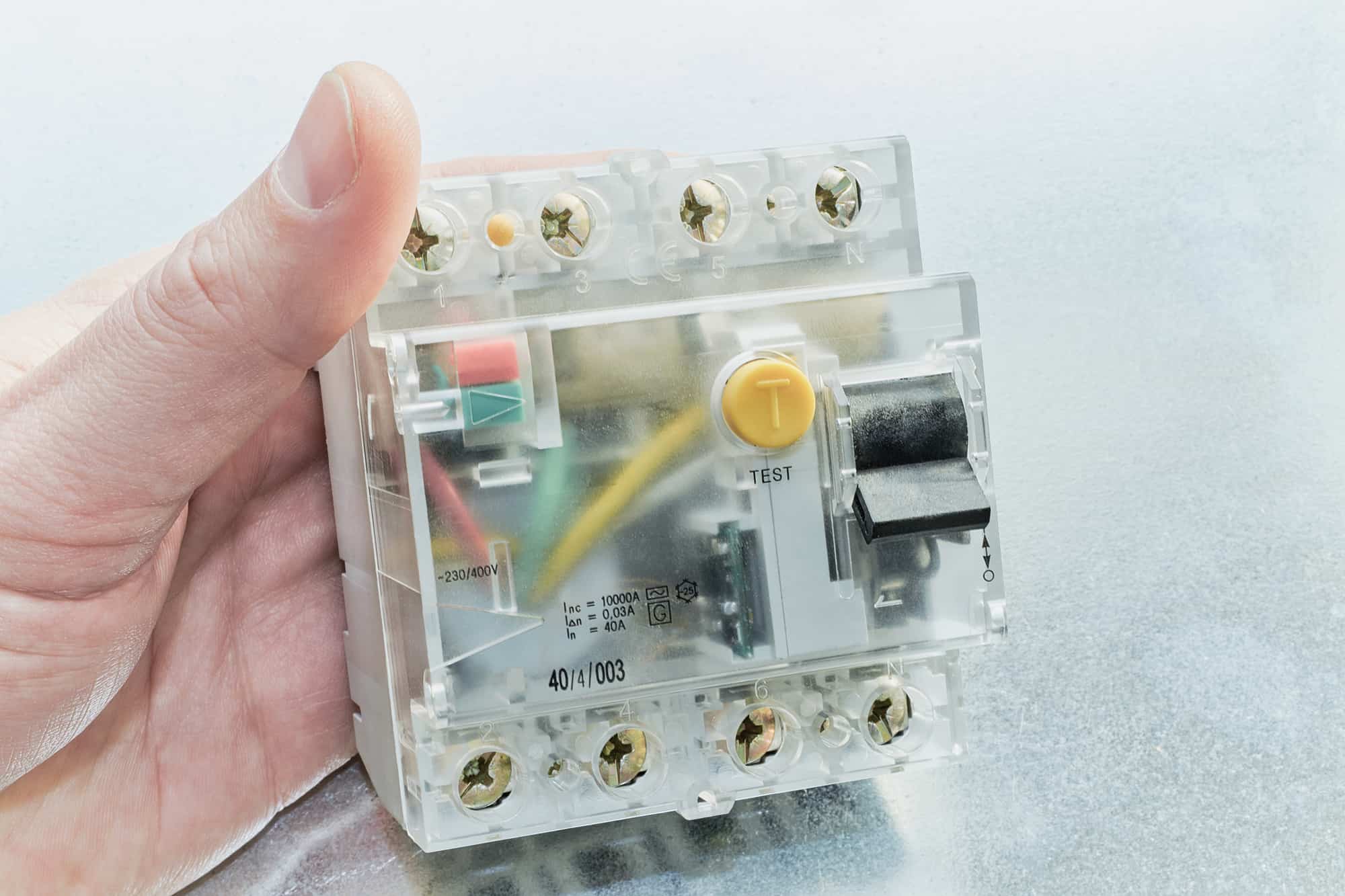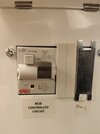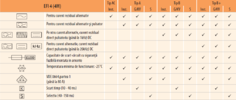Welcome to Tesla Motors Club
Discuss Tesla's Model S, Model 3, Model X, Model Y, Cybertruck, Roadster and More.
Register
Install the app
How to install the app on iOS
You can install our site as a web app on your iOS device by utilizing the Add to Home Screen feature in Safari. Please see this thread for more details on this.
Note: This feature may not be available in some browsers.
-
Want to remove ads? Register an account and login to see fewer ads, and become a Supporting Member to remove almost all ads.
You are using an out of date browser. It may not display this or other websites correctly.
You should upgrade or use an alternative browser.
You should upgrade or use an alternative browser.
Tesla Wall Connector - Type B / Type A-EV RCD
- Thread starter pow216
- Start date
kelvin 660
White SR+ with LFP battery
Are you referring to EU TWC?
Self-Monitoring and Recovery
The Wall Connector has a ground monitoring
circuit that continuously checks for the
presence of a safe ground connection and
automatically recovers from faults. Manual
testing and resetting is not required.
Temporary problems such as ground faults or
utility power surges are overcome
automatically. If a residual current fault occurs
that interrupts charging, the Wall Connector
automatically tries to clear the fault and re-
attempt charging.
The problem is thatTesla do not give any details so its not possible to say if the protection is for the TWC or for the user...
Self-Monitoring and Recovery
The Wall Connector has a ground monitoring
circuit that continuously checks for the
presence of a safe ground connection and
automatically recovers from faults. Manual
testing and resetting is not required.
Temporary problems such as ground faults or
utility power surges are overcome
automatically. If a residual current fault occurs
that interrupts charging, the Wall Connector
automatically tries to clear the fault and re-
attempt charging.
The problem is thatTesla do not give any details so its not possible to say if the protection is for the TWC or for the user...
tezcatcatl
Member
It is an EU TWC.Are you referring to EU TWC?
Self-Monitoring and Recovery
The Wall Connector has a ground monitoring
circuit that continuously checks for the
presence of a safe ground connection and
automatically recovers from faults. Manual
testing and resetting is not required.
Temporary problems such as ground faults or
utility power surges are overcome
automatically. If a residual current fault occurs
that interrupts charging, the Wall Connector
automatically tries to clear the fault and re-
attempt charging.
The problem is thatTesla do not give any details so its not possible to say if the protection is for the TWC or for the user...
Hmm in this case we follow the principle of "better safe than sorry", I guess.
I just read that lots of people have problems with their GFCI circuit breakers tripping while it shouldn't.
On the other hand, I also don't know if I should use a combination of Type B RCD and a Type B GFCI circuit breaker.
Or if a Type B RCD and a standard circuit breaker without GFCI would be safe enough or not..
MrBadger
Badger out
The issue is not so much protection of the TWC, its more to do with DC leakage 'blinding' a Type A or A/C RCD that is protecting other circuits. It doesn't take much DC leakage (6mA is the limit for UK device protection) to affect the protection of other circuits supposedly being protected. So a fault elsewhere in the house may not be protected against. The Type B, or an alternative 6mA DC protection device will prevent this blinding.
kelvin 660
White SR+ with LFP battery
I think you need to consult a local electrician if you want to be safe. For example in the UK I also have a PEN fault detector suppling power to the TWC. Not sure about whats required in The Netherlands...
My previous ones were separate but faulty so they've just changed it to this combined unit.
Is this combined one to the correct standard? Just wanted to check please.
max 32A single phase
It's UK domestic so sometimes goes up to 240v but usually I get about 235V
Doesn't say type B anywhere though?
Is this combined one to the correct standard? Just wanted to check please.
max 32A single phase
It's UK domestic so sometimes goes up to 240v but usually I get about 235V
Doesn't say type B anywhere though?
Attachments
Last edited:
tezcatcatl
Member
Are you charging on 230v 32A single phase? (7.36kw)?My previous ones were separate but faulty so they've just changed it to this combined unit.
Is this combined one to the correct standard? Just wanted to check please
tezcatcatl
Member
The issue is not so much protection of the TWC, its more to do with DC leakage 'blinding' a Type A or A/C RCD that is protecting other circuits. It doesn't take much DC leakage (6mA is the limit for UK device protection) to affect the protection of other circuits supposedly being protected. So a fault elsewhere in the house may not be protected against. The Type B, or an alternative 6mA DC protection device will prevent this blinding.
Ahh that makes sense. So Tesla says "our TWC has an internal GFCI unit" but they do not specify if it just protects against DC leak or if it does everything a Type B RCD is supposed to do.
Upon checking the manual of my specific TWC manual (not gen 3), I now see that they do recommend the use of a RCD, and they do not say "don't use GFCI circuit breakers" like they do in gen 3 manual.
So MAYBE, just maybe, in Gen 3 they added some sort of additional safety mechanisms. Be it for DC leak only or both.
I think Tesla should give more specifications on this..
Yes max 32A single phase cheers.Are you charging on 230v 32A single phase? (7.36kw)?
It's UK domestic so sometimes goes up to 240v but usually I get about 235V
tezcatcatl
Member
Ah I see.Yes max 32A single phase cheers.
It's UK domestic so sometimes goes up to 240v but usually I get about 235V
To me that looks like a Type A RCD. I am not an electrician so maybe someone with more experience can verify.
If that is the case, although from my understanding, it used to be OK to use Type A, but now the new standard recommends Type B RCDs.
I guess it could be ok if it was a Gen 3 TWC, since Tesla mentions an integrated RCD, which MAY protect against the DC leak.
But again, I am not an electrician. I am just brainstorming here with very limited knowledge on the case.
I would wait for more experienced members comments, or take it up with an actual electrician / engineer.
Just for info:

My previous ones were separate but faulty so they've just changed it to this combined unit.
Is this combined one to the correct standard? Just wanted to check please.
max 32A single phase
It's UK domestic so sometimes goes up to 240v but usually I get about 235V
Doesn't say type B anywhere though?
From the symbols on this RCBO there is no suitable DC capability (see comment above by @VanillaAir_UK )
RedMod3
Member
My free BP Pulse charger is due to be installed tomorrow and it will be connected to a Type B RCD and 40Amp breaker. When the installers have finished, I am fitted a DPDTCO 63A switch to select either the Tesla charger or the BP Charger. As BP Pulse will not use 10mm twin/earth, I'll be replacing their cable with my thicker cable.
Personally, I feel happier with the Type B breaker. In the UK, you need DNO approval to connect an EV charger.
Personally, I feel happier with the Type B breaker. In the UK, you need DNO approval to connect an EV charger.
MrBadger
Badger out
Nothing to do with DNO approval, its to do with ensuring compliance and notification of building and electrical regulations, which have a legal obligation. The notification may well be the most expensive bit if the electrician is not Part P certified and a member of one of the bodies (NICEIC etc) that allow them to self certify. Building Control may well end up charging several £££ or more for inspection and certification.
I live in Europe.
I have 3 phase 400V installations at my two homes.
From what I saw, the new Tesla Wall Connector has integrated DC Protection.
From the UK Gen3 manual
I also have my homemade Easy EVSE WIFI + OpenWB on my PV system (22kW).
Here I've identified some options for the Type B or Type B+ 3 phase products:
- from ETIGroup
002062643 EFI-4 B 40/0.03 - 140.91 euro/piece + VAT, 30-40 days delivery
002062648 EFI-4 B+ 40/0.03 - 154.63 euro/piece + VAT, 30-40 days delivery
 www.etigroup.eu
www.etigroup.eu
- from China
 www.aliexpress.com
btw, ETEK is the real producer.
www.aliexpress.com
btw, ETEK is the real producer.
I've ordered this and wait to be delivered.

 www.aliexpress.com
www.aliexpress.com
I have no real way to test the Chinese RCD...
I have 3 phase 400V installations at my two homes.
From what I saw, the new Tesla Wall Connector has integrated DC Protection.
From the UK Gen3 manual
Wall Connector features built-in RCD Type A + DC 6mA.
I also have my homemade Easy EVSE WIFI + OpenWB on my PV system (22kW).
Here I've identified some options for the Type B or Type B+ 3 phase products:
- from ETIGroup
002062643 EFI-4 B 40/0.03 - 140.91 euro/piece + VAT, 30-40 days delivery
002062648 EFI-4 B+ 40/0.03 - 154.63 euro/piece + VAT, 30-40 days delivery
RCCB B and B+ type - Etigroup
Leading electrical protection devices manufacturer in the world.
- from China
type rcd - Buy type rcd with free shipping on AliExpress
Quality type rcd with free worldwide shipping on AliExpress
I've ordered this and wait to be delivered.

67.5US $ |RCCB ETL1 63B 4P 3P+N B type 400/415V~ 50HZ/60HZ Residual current circuit breaker 20A 25A 40A 63A 30mA 100mA 300mA|Circuit Breakers| - AliExpress
Smarter Shopping, Better Living! Aliexpress.com
I have no real way to test the Chinese RCD...
Attachments
Gaja93
New Member
After reading most of this topic, I'm still trying to figure this out..I've read the whole topic but I couldn't really come to a conclusion..
Type B is the new standard. Type A used to be OK.
Now, I bought a Tesla wall charger, 3x32A.
I am going to get it installed. No standard requirements in the country it will be installed.
And no certified / experienced installers.
Would I be risking my family's life, our house, if I use a TYPE A instead of TYPE B 3x40A RCD?
Tesla states "Wall Connector features built-in RCD Type A + DC 6mA."
Can anybody give a clear answer what else do I need for my 3x32A Gen3 TWC install? I just need to be safe, I don't care about regulation.
I've seen some local installers use circuit boxes like this for other brand chargers, but I'm not sure If I need all of this stuff for TWC, or they're just trying to sell more equipment than needed.. Also I'm not electrician so I'm not sure what most of this stuff is:
It’s the regulations that ensure you have the elements that will keep you safe. There is also certification to be supplied to your DNO. From what you say I suspect that you will require either an earth rod or O-pen device such as the Matt:e. An appropriately qualified installer will tell you which is required for your situation.Can anybody give a clear answer what else do I need for my 3x32A Gen3 TWC install? I just need to be safe, I don't care about regulation.
Sean.
Active Member
Do they have the concept of a DNO in Serbia / I’ve not the slightest clue. Not even sure why this is being asked in a UK sub-forum. Clearly the person need to comply with their local electrical regulations. Messing about with EV charge setups by unqualified people is just asking for trouble.It’s the regulations that ensure you have the elements that will keep you safe. There is also certification to be supplied to your DNO. From what you say I suspect that you will require either an earth rod or O-pen device such as the Matt:e. An appropriately qualified installer will tell you which is required for your situation.
Good point! I wasn't paying attention to OP location.Do they have the concept of a DNO in Serbia / I’ve not the slightest clue. Not even sure why this is being asked in a UK sub-forum. Clearly the person need to comply with their local electrical regulations. Messing about with EV charge setups by unqualified people is just asking for trouble.
NewbieT
Active Member
Looks fairly comprehensive. Under-voltage release + over current protection + residual current protection. As Adopado said that doesn’t cover your ground/earth arrangement- see page 10 of the TWC manual.After reading most of this topic, I'm still trying to figure this out..
Tesla states "Wall Connector features built-in RCD Type A + DC 6mA."
Can anybody give a clear answer what else do I need for my 3x32A Gen3 TWC install? I just need to be safe, I don't care about regulation.
I've seen some local installers use circuit boxes like this for other brand chargers, but I'm not sure If I need all of this stuff for TWC, or they're just trying to sell more equipment than needed.. Also I'm not electrician so I'm not sure what most of this stuff is:
View attachment 926656
Functional, yes. Over specified, no (each component is performing a different function). ‘Safety’ is all relative mind. Would I have it in my own house, yes. We’ve seen worse installs on here from professional electricians in the early years of the 18th Edition. In the UK we would like a metal consumer unit too please. Consider adding SPDs if not present elsewhere and possibly arc fault detection (albeit not that common in the UK yet).
To sleep well at night and maintain insurance validity, use a qualified electrician.
I don’t think there is a Serbia sub- forum?
Similar threads
- Replies
- 2
- Views
- 217
- Replies
- 11
- Views
- 532
- Replies
- 2
- Views
- 239
- Replies
- 4
- Views
- 1K
- Replies
- 1
- Views
- 297




